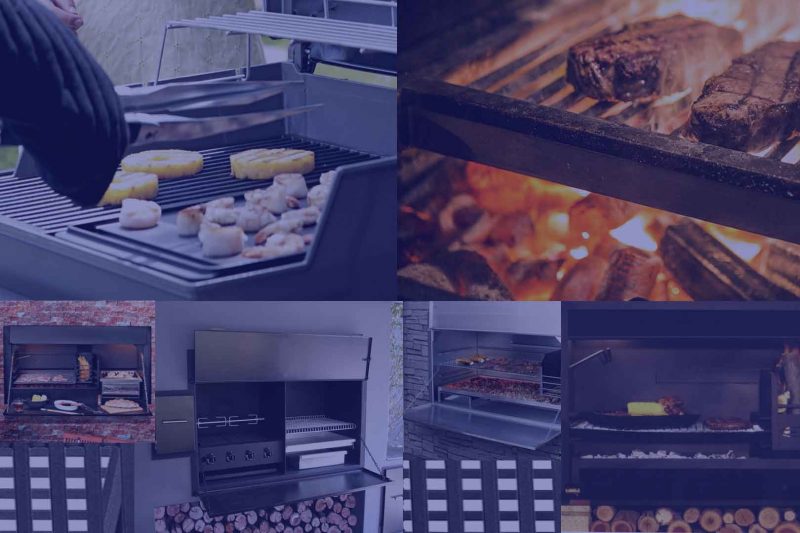You don’t need to be a metallurgist to buy a good built-in braai or braai grid. But, when armed with a bit of knowledge, you could save yourself a lot of trouble, time, and money. Knowing built-in braai steel types is useful when choosing a material to cook with or cook on. There are countless studies on the toxicity of metals and steel…and steel is composed of several metals. Let’s not anatomize the crystal structure and refinement process of iron, steel, or carbon, otherwise, we will be here all day week.
Look at a chemical compound diagram and all you see are honeycombs, which distracts one into thinking about bees instead of braais. So, we’ll stick to the basics of knowing steel and the different types.
The finest Built-In Braai Steel Types
Steel is an alloy made from carbon and iron and comes in different grades, depending on its chemical composition (i.e. the honeycombs). The four types of steel are alloy steel, carbon steel, tool steel, and stainless steel.
Carbon steel is heavy, brittle and vulnerable to corrosion and mainly used in fences, bridges, and buildings. Alloy steels are cheaper and used for mechanical parts. Tool steel is super hard making it ideal for metal tools. But, we have our cooking heads on now, not our workshop or petrol heads. So, we’re left with the last and more common, stainless steel.
Stainless steel is used in most household appliances and cooking utensils due to the low carbon, and ability to withstand high temperatures. There are over a hundred grades of stainless steel, making it a versatile and customizable material. It’s also a popular material for the built-in braai. However, intense heat can wear down items if they’re low grade, which accelerates their deterioration. Spending an extra little time in choosing solid products will help you dodge the cheap and nasty.

Most solid built-in braais (wood and gas) are made out of steel and some are coated with a heat resistant black primer. Whereas braai grids vary considerably in their material, which ultimately affects their cost, implementation, and durability.
Here’s an overview of different steel types used for braais and grills:
Chrome-Plated Steel
You would only really go this route if you intend using your chrome-plated steel grid once in a blue moon for a toastie and boerie. Like if you go camping twice a year and want a cheap grill, then you’ll be okay here. However, if you’re looking for a new built-in braai grid that will be used frequently then consider something more durable. Porcelain-coated or stainless steel is your better bet although you may need to dig a bit deeper into your pocket.
Note: We’re not going to give cast iron too much attention here as its an iron (not a steel). Although it is popular and has its advantages, they’re pricey, heavy, and hard to clean and suited to gas built-in braais.
Porcelain-Coated Steel
If you want something as durable as cast iron but without the rigorous maintenance, then you may have found your grid. Porcelain-coated steel grids lean towards the upper price scale but the durability and performance is a solid choice for a built-in braai. One thing worth mentioning is to watch the chipping of the porcelain coating, which can lead to rust. Choose a quality-grade manufacturer to avoid substandard coatings but keep metal objects and scrapers off the surface.
Stainless Steel
Stainless steel is the most commonly used household material. With all its advantages, it does wear down after repeated use, over time. But, the good news is that most hardcore braai chefs vote on stainless steel. It may be less durable than the cast iron level but more affordable while still hitting the mark with outstanding heat retention, quality, and easier maintenance than other steel types.
That’s it. A basic 101 lesson on knowing the different built-in braai steel types.
